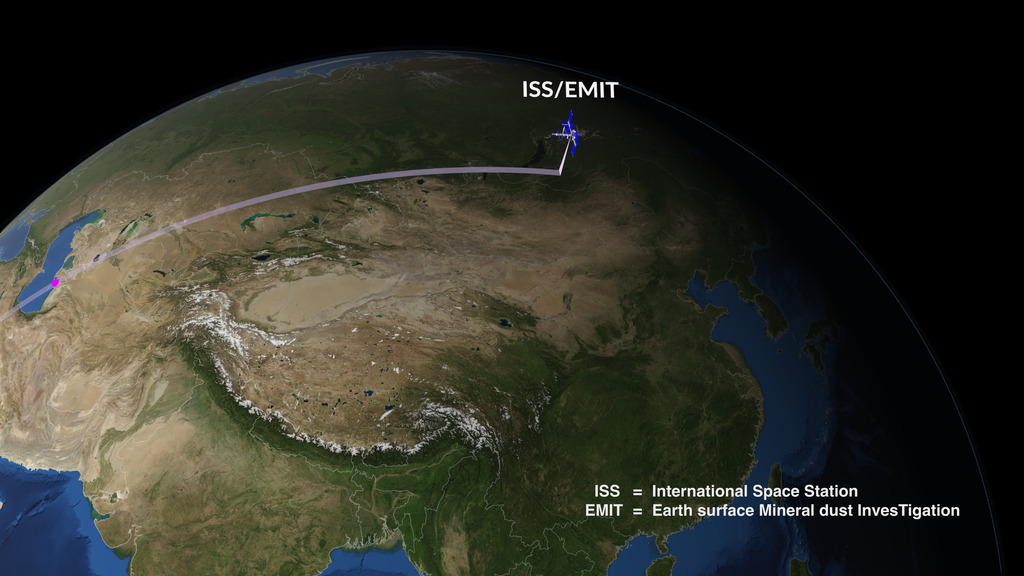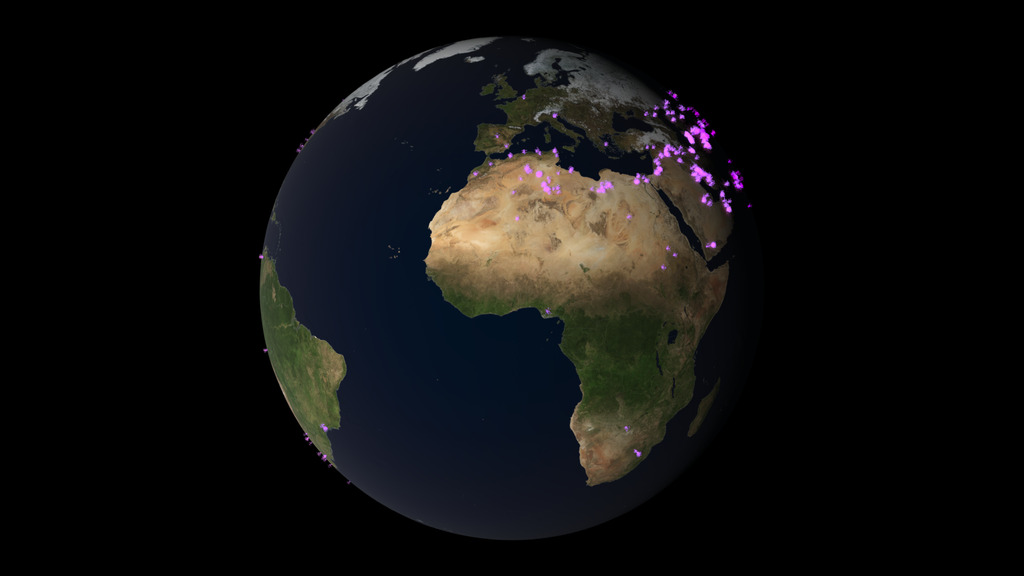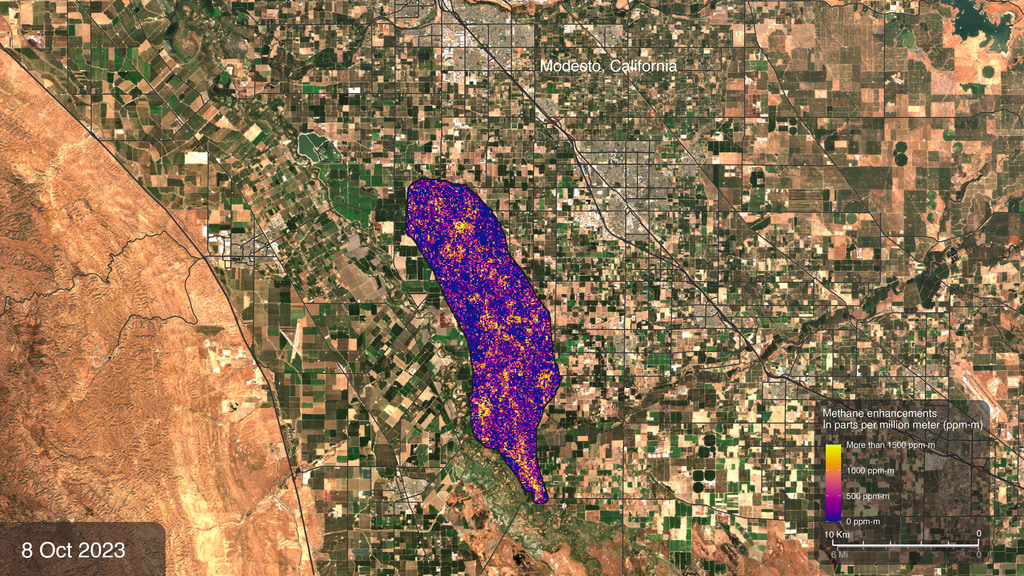Tracking Power Plant Methane Emissions

A mosaic of AVIRIS-NG images tracks emissions from the Valley Generating Station in California
Atmospheric methane is a potent greenhouse gas and an important contributor to air quality. Future instruments on orbiting satellites can help improve our understanding of important methane emission sources. NASA conducts periodic methane studies using the next-generation Airborne Visible/Infrared Imaging Spectrometer (AVIRIS-NG) instrument.
These images show concentrations of methane in a natural gas plume relative to background air measured by AVIRIS-NG, overlaid on true-color land surface images (source: Google Earth). The methane plume originates from a compressor at Valley Generating Station, a natural gas-fired power plant near Los Angeles. The color scale indicates the concentration of methane in each pixel relative to background methane concentrations in the surrounding atmosphere. The plume was initially detected by a single overflight in September 2017, and was detected by AVIRIS-NG again on six flights in July-August 2020 with a higher average emission rate for that period. After repairs, 3 overflights on Sept 21, 2020 detected only trace amounts of methane.
An animation of AVIRIS-NG images tracks methane emissions from the Valley Generating Station in California.
For More Information
Credits
Please give credit for this item to:
NASA/JPL-Caltech/University of Arizona/University of Michigan/Google Earth
-
Animator
Release date
This page was originally published on Wednesday, September 29, 2021.
This page was last updated on Friday, December 13, 2024 at 12:27 AM EST.


